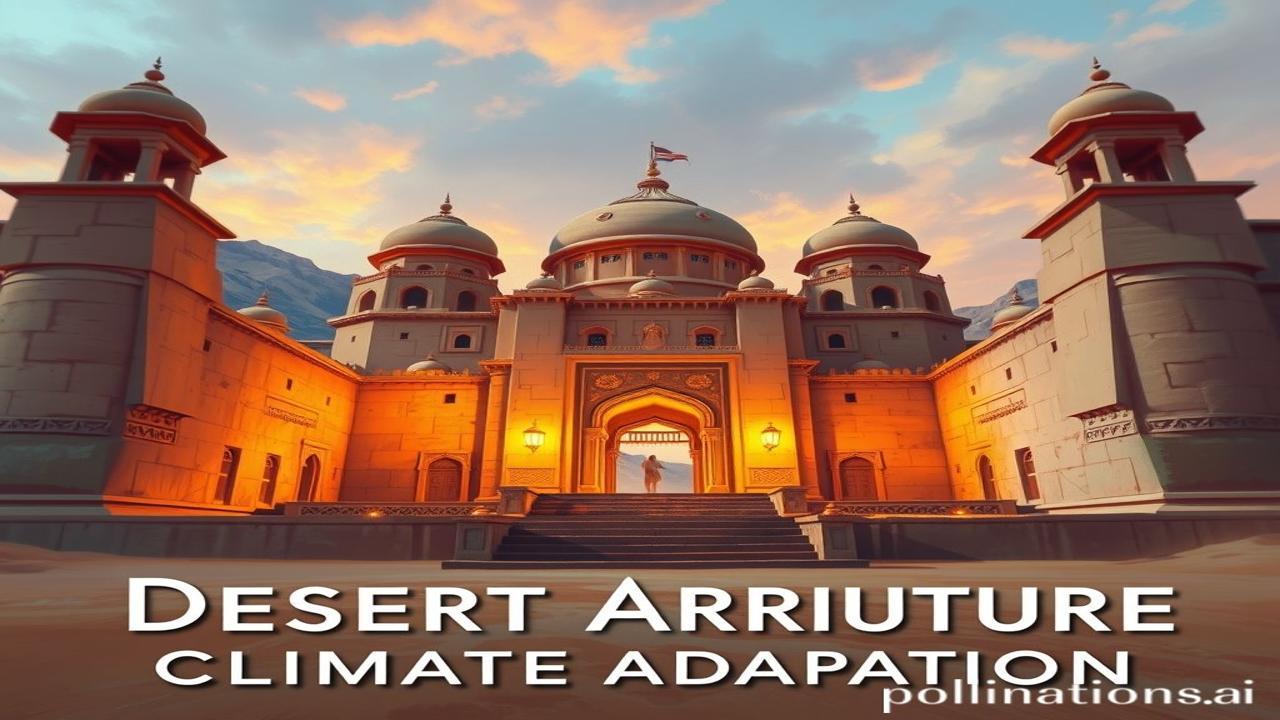Ret Ki Kahani, Gharon Ki Zubani: Desert Architecture & Climate Adaptation
Kabhi socha hai, jab suraj aag ugalta hai aur reth udti hai, tab insaan ne apne ghar kaise banaye honge? Waqt ki dhool mein, kuch aise hi sawaalon ke jawab chhup hain, jo hamein batate hain ki insaan ne prakriti se ladne ke bajaye, uske saath jeena seekha. This blog post explores the incredible world of desert architecture, a masterclass in climate adaptation.
Rajasthan Ki Garmi Se Takkar: Historical & Cultural Context
Desert architecture isn’t just about building houses in the desert; it’s a whole philosophy of living in harmony with harsh climates. It’s a legacy of ingenuity passed down through generations.
What is it? Desert architecture refers to the design and construction techniques used in arid and semi-arid regions to create buildings that are comfortable, energy-efficient, and sustainable. It’s all about using local materials, understanding the wind patterns, and maximizing shade.
When & Where? This form of architecture is ancient, practiced for centuries across deserts of the world, from North Africa to the Middle East, and of course, right here in India – especially in Rajasthan and Gujarat. Think of the forts of Rajasthan, the mud-brick houses of Kutch, and even the traditional stepwells (baolis).
Why is it important? In a world grappling with climate change, desert architecture offers valuable lessons. It teaches us how to build sustainably and responsibly, using minimal resources and adapting to extreme weather conditions. Its importance lies in demonstrating solutions for a sustainable future.
Rulers, Artisans, Aur Unki Kala: The Human Element
Imagine life in a Rajasthani village centuries ago. “Ma Durga, aaj toh garmi had se zyada hai!” a woman might say, wiping sweat from her brow. “Chinta mat karo, beta. Yeh mitti ki deewaren ghar ko thanda rakhengi,” her mother would reply, patting the thick walls of their house. These walls, made of locally sourced mud and straw, were the key to survival.
The rulers of Rajasthan, like the Rajputs, understood this well. They built massive forts like Jaisalmer Fort, known as the “Golden Fort,” not just for defense, but also for climate control. The narrow streets, intricate jalis (perforated screens), and strategically placed courtyards created a microclimate within the fort, offering respite from the scorching heat. Artisans dedicated their lives to crafting these structures, using techniques passed down through their families. They understood the properties of different materials and how to manipulate them to create comfortable living spaces.
Dhrohar Aur Pehchan: Desert Architecture Today
Even today, in modern India, we see echoes of desert architecture. In Rajasthan, many new buildings incorporate traditional elements like courtyards, jalis, and mud construction. This isn’t just about aesthetics; it’s about creating spaces that are naturally cool and comfortable, reducing the need for air conditioning. You’ll find it in eco-resorts, modern homes and even commercial buildings.
The focus on locally sourced materials and sustainable construction aligns perfectly with the principles of Bharatiyata. It emphasizes self-reliance, resourcefulness, and respect for nature. It’s a reminder that our ancestors were not just passive inhabitants of the land; they were skilled architects and engineers who knew how to thrive in even the harshest environments.
Fun Fact Ya Myth-Buster: The “Cooling” Power of Water
Log samajhte hain ki desert architecture mein sirf mitti ka istemal hota hai. Lekin asli sach yeh hai ki water plays a crucial role. Stepwells, or baolis, are not just water sources, but also architectural marvels. They are designed to create a cool, humid environment that lowers the temperature of the surrounding area. Some baolis even have underground passages that provide natural air conditioning! Another myth is that all desert architecture is basic, but the detailed carvings, intricate designs and complex layouts show that is far from the truth.
Ret Ki Khushboo, Deewaron Ki Thandak: Visual & Sensory Layer
Imagine walking through the narrow, winding streets of Jodhpur, the “Blue City.” The air smells of dust and spices, a heady mix that tickles your nose. The walls of the houses, painted in vibrant shades of blue, feel cool to the touch. The sounds of children playing, vendors hawking their wares, and the rhythmic chanting from a nearby temple echo in the streets, creating a vibrant and lively atmosphere. At night, the sky is a canvas of stars, undiminished by city lights.
Antim Vichar: A Lesson From the Sands
Desert architecture is more than just bricks and mortar; it’s a testament to human resilience, creativity, and the ability to adapt. It’s a reminder that we can learn a lot from the past, especially when it comes to building a sustainable future.
“Vasudhaiva Kutumbakam” – The world is one family. Let’s build our homes with that in mind, respecting nature and embracing sustainable practices.
